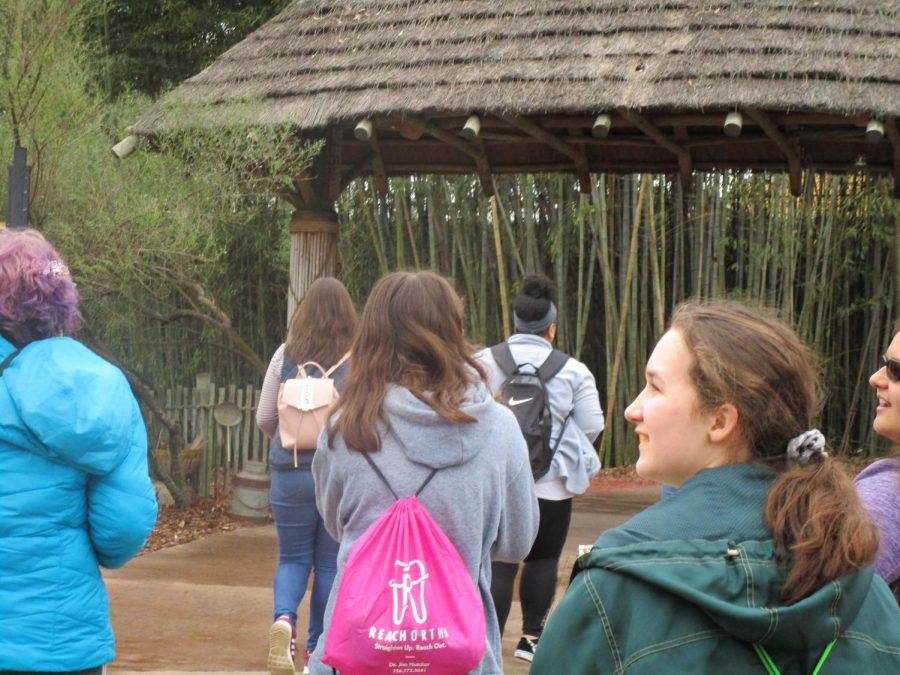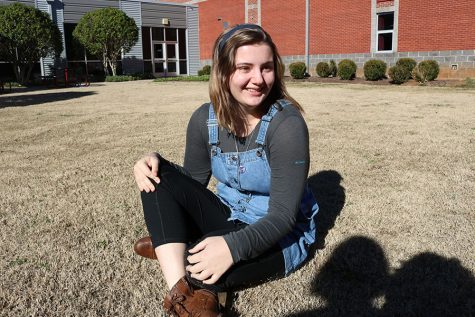An Art Field Trip to the Birmingham Zoo
March 23, 2019
March 8th, students from Mrs. Lakso and Mrs. Norton’s classes traveled to the Birmingham Zoo. All the students met up at the bus loop at 7:15 a.m. to load to the bus for a two-hour trip. Some students may wonder, what were art students doing at a zoo? Is this an actually educational field trip?
This field trip to the Birmingham Zoo was one that had not been tried before, but many students clearly stated that it was educational in many ways. When the Bob Jones students first made it to the zoo, they were given time to travel the zoo to study the anatomy and patterns of the variety of animals they encountered.
Sophomore Shelby West noted, “It’s a good learning experience because you can see the patterns and little details on the animals a lot better.”
“I learned a lot about the endangered species, and a lot of them I didn’t know were endangered,” also stated Sophomore Susan Xiao.
The Birmingham Zoo houses beautiful species such as elephants, jaguars, sea lions, and rhinos. They also look after a huge quantity of endangered species. The Birmingham Zoo highly speaks up about the importance of animal protection and having a safe environment for all animals.
After exploring the zoo, the student’s were invited to a class taught by Zoo Educator Kate Davis. The class was about the textures of animals’ fur, skin, and feathers, and how an artist can more easily study the patterns.
Not only did the students get to study the designs that cover a variety of creatures, but they were also given the opportunity to view three different animals to practice sketching them up close. They were able to practice with animals of all ranges: birds, reptiles, and mammals.
“I think that seeing the animals helps you visualize and see how their legs move and how they’re different then what you think,” continued Susan Xiao.
This class was very beneficial to the students because they were able to learn more about the importance of animal anatomy and how to study it more realistically. Multiple people are close-minded to the idea that art and science coincide.
The instructor Kate Davis expressed, “I really love when you marry art and science together, there are quite a few careers that use scientific illustration and things like that. And a lot of art has been inspired by nature and buildings and architecture, so I think it’s important to see these animals up close.”
This also applies to the subject of careers people in arts can pursue. What could someone do with an experience like this in a scientific field?
“Scientific illustration, so drawing for a biology textbook, or for animal textbooks, or for vet textbooks, most of those things are not photos but actually illustrations. Architecture as well as engineering, they are looking for solutions to the problem, and they’re looking at nature because nature has already evolved to solve these problems, and so they’re basing, for example, trains after bird beaks, because there was this train exiting a tunnel that was causing a sonic boom, so they redesigned a train based on the kingfisher’s beak,” concluded Davis.
After appreciating this excursion, many Bob Jones art students hope in the future that there will be more opportunities for field trips like this so they may understand more uncommon careers that use art.


